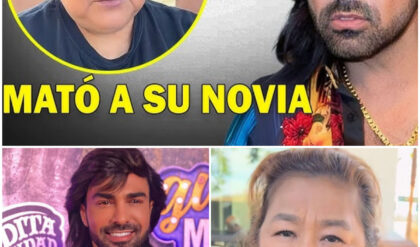The Rise and Fall of Young and Ace: A Tragic Tale of Gangs, Rivalries, and Rap
In recent headlines, rapper Young and Ace (real name Isaiah Chance) has found himself at the center of a federal manhunt following a warrant issued for his arrest on a murder charge. At just 26 years old, Ace is now embroiled in a complex legal battle involving a RICO case, a notorious federal law used to prosecute organized crime. The story of Ace’s downfall is tied to a long-standing feud with rival rapper Julio Fulio (Charles Jones), which has left a trail of violence, death, and destruction in its wake. This case represents not just the tragedy of individual lives lost but also a broader societal issue of gang violence and its entanglement with the world of hip-hop.
A Deadly Rivalry: The Genesis of the Feud
The rivalry between Young and Ace and Julio Fulio dates back to 2017. Both rappers hail from Jacksonville, Florida, and their feud initially stemmed from affiliations with rival gangs: Ace with ATK and Fulio with KTA. However, this was no ordinary disagreement; the bad blood between the two rapidly escalated into a violent back-and-forth, with both parties releasing diss tracks and engaging in real-life confrontations that left lives shattered.
In 2018, the feud became personal for Ace when his brother, Trevon Bullard, along with two other friends, were killed in a drive-by shooting. The incident took place after they were followed from a Jacksonville restaurant to Town Center Parkway, where they were ambushed. Ace himself survived the attack despite being shot multiple times, but the deaths of his brother and friends became a critical turning point in the rivalry between ATK and KTA.
Fulio’s Revenge and Ace’s Reprisal
The aftermath of the 2018 shooting saw Julio Fulio intensifying his attacks on Ace, both lyrically and physically. Fulio released a diss track in 2021 titled “When I See You,” where he cruelly took credit for the deaths of Ace’s loved ones. The track’s lyrics were shockingly explicit, with Fulio even referencing Ace’s brother by name, saying: “Eat his birthday cake dead in the worst way.” Such provocative content only heightened the tensions between the two factions, and it was clear that the feud had crossed a point of no return.
On June 23, 2024, during the weekend of his 26th birthday, Julio Fulio’s life was cut short. The rapper was performing at a club in Tampa when he was shot and killed. Fulio’s death marked a tragic end to the violent saga between him and Young and Ace, but the story did not end there.
Just hours after Fulio’s death, Ace released a song titled “Do It,” in which he appeared to take responsibility for his rival’s murder. The lyrics were deeply disturbing, not only because of their graphic nature but also because they seemed to taunt law enforcement and Fulio’s grieving family. With video evidence later emerging from CCTV footage, Ace and his associates were quickly tied to Fulio’s murder, leading to the RICO charges filed against him in July 2024.
The RICO Case: What It Means
RICO, or the Racketeer Influenced and Corrupt Organizations Act, is a powerful legal tool designed to dismantle organized crime syndicates. What makes it particularly effective is that individuals can be charged under RICO even if they did not commit a specific crime themselves, as long as they are part of an organization that engaged in criminal activity. In the case of Young and Ace, federal authorities allege that Ace and members of his gang, ATK, were involved in a series of violent crimes, including shootings, murder, and gang-related activities.
The investigation into Ace and his associates reportedly uncovered evidence linking them to multiple violent incidents. Surveillance footage from the night of Fulio’s murder, along with phone records and witness testimonies, painted a clear picture of a premeditated attack. Law enforcement tracked Ace and his crew as they followed Fulio from location to location before ultimately ambushing him.
The Arrests: A Dramatic Conclusion
In the wake of the RICO charges, federal authorities arrested three members of ATK: Isaiah Chance (Young and Ace), Alicia Andrews, and Sean Gright. All three individuals are under 21 years old, which underscores the tragic reality of gang life: young people drawn into a cycle of violence, often before they have the maturity to fully understand the consequences of their actions.
The arrest footage, which quickly circulated online, shows the moment authorities apprehended Ace. The scene was tense, with armed officers ordering Ace to step out of his car, his hands raised, before being taken into custody. Despite the dramatic nature of the arrest, Ace remained calm, his demeanor eerily composed as he was placed under arrest.
A Broader Issue: The Intersection of Gangs and Hip-Hop
The story of Young and Ace and Julio Fulio is not unique in the world of rap. The hip-hop genre, particularly in certain regions of the U.S., has long been intertwined with gang culture. For many artists, their lyrics are a reflection of their lived experiences, often growing up in violent neighborhoods where gang affiliations are a matter of survival. However, this overlap between music and real-life crime can also be deadly.
Rap battles, once viewed as a form of lyrical competition, have taken on a more dangerous edge in recent years. Diss tracks, once seen as an artistic way to settle disputes, now often lead to real-world violence. In the case of Ace and Fulio, the war of words led to a war on the streets, resulting in multiple deaths and ruined lives.
Conclusion: A Tragic End
Young and Ace’s rise to fame was marked by talent and potential, but his life is now overshadowed by the consequences of his gang affiliations and violent actions. His story serves as a grim reminder of the destructive power of gang culture and the dangerous path that so many young artists find themselves on. As Ace awaits trial, the rap community is left to reflect on the broader implications of glorifying gang life in music and the real-world consequences that follow.
The fall of Young and Ace is a tragedy, not just for him and his victims but for the community as a whole. It is a call for intervention, for breaking the cycle of violence that has claimed too many lives, and for finding a way to separate the art from the violence that too often accompanies it.





